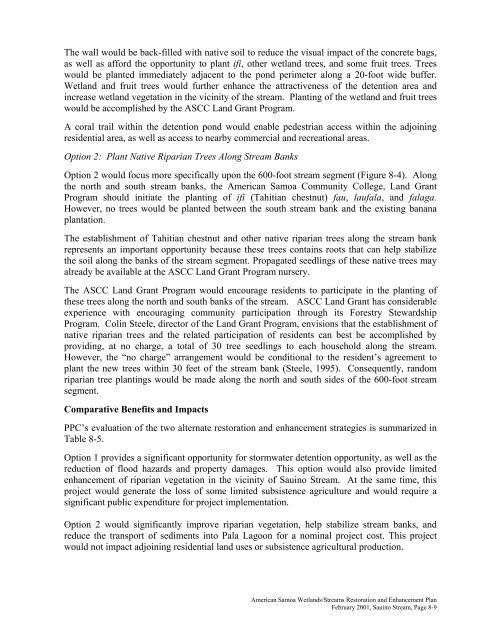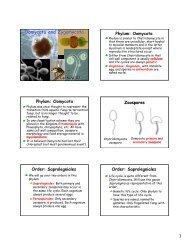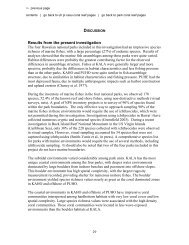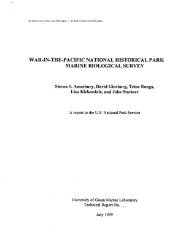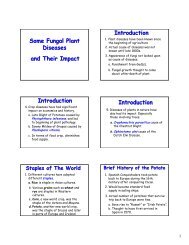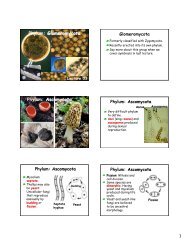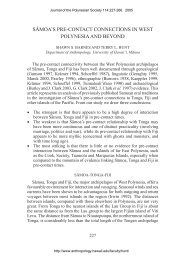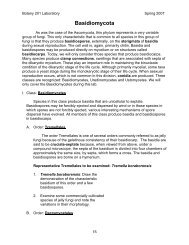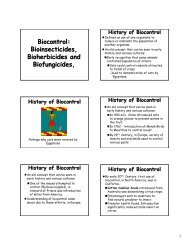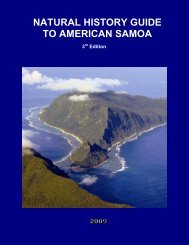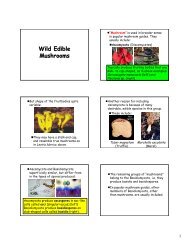american samoa - University of Hawaii at Manoa Botany Department
american samoa - University of Hawaii at Manoa Botany Department
american samoa - University of Hawaii at Manoa Botany Department
- No tags were found...
You also want an ePaper? Increase the reach of your titles
YUMPU automatically turns print PDFs into web optimized ePapers that Google loves.
The wall would be back-filled with n<strong>at</strong>ive soil to reduce the visual impact <strong>of</strong> the concrete bags,as well as afford the opportunity to plant ifi, other wetland trees, and some fruit trees. Treeswould be planted immedi<strong>at</strong>ely adjacent to the pond perimeter along a 20-foot wide buffer.Wetland and fruit trees would further enhance the <strong>at</strong>tractiveness <strong>of</strong> the detention area andincrease wetland veget<strong>at</strong>ion in the vicinity <strong>of</strong> the stream. Planting <strong>of</strong> the wetland and fruit treeswould be accomplished by the ASCC Land Grant Program.A coral trail within the detention pond would enable pedestrian access within the adjoiningresidential area, as well as access to nearby commercial and recre<strong>at</strong>ional areas.Option 2: Plant N<strong>at</strong>ive Riparian Trees Along Stream BanksOption 2 would focus more specifically upon the 600-foot stream segment (Figure 8-4). Alongthe north and south stream banks, the American Samoa Community College, Land GrantProgram should initi<strong>at</strong>e the planting <strong>of</strong> ifi (Tahitian chestnut) fau, laufala, and falaga.However, no trees would be planted between the south stream bank and the existing bananaplant<strong>at</strong>ion.The establishment <strong>of</strong> Tahitian chestnut and other n<strong>at</strong>ive riparian trees along the stream bankrepresents an important opportunity because these trees contains roots th<strong>at</strong> can help stabilizethe soil along the banks <strong>of</strong> the stream segment. Propag<strong>at</strong>ed seedlings <strong>of</strong> these n<strong>at</strong>ive trees mayalready be available <strong>at</strong> the ASCC Land Grant Program nursery.The ASCC Land Grant Program would encourage residents to particip<strong>at</strong>e in the planting <strong>of</strong>these trees along the north and south banks <strong>of</strong> the stream. ASCC Land Grant has considerableexperience with encouraging community particip<strong>at</strong>ion through its Forestry StewardshipProgram. Colin Steele, director <strong>of</strong> the Land Grant Program, envisions th<strong>at</strong> the establishment <strong>of</strong>n<strong>at</strong>ive riparian trees and the rel<strong>at</strong>ed particip<strong>at</strong>ion <strong>of</strong> residents can best be accomplished byproviding, <strong>at</strong> no charge, a total <strong>of</strong> 30 tree seedlings to each household along the stream.However, the “no charge” arrangement would be conditional to the resident’s agreement toplant the new trees within 30 feet <strong>of</strong> the stream bank (Steele, 1995). Consequently, randomriparian tree plantings would be made along the north and south sides <strong>of</strong> the 600-foot streamsegment.Compar<strong>at</strong>ive Benefits and ImpactsPPC’s evalu<strong>at</strong>ion <strong>of</strong> the two altern<strong>at</strong>e restor<strong>at</strong>ion and enhancement str<strong>at</strong>egies is summarized inTable 8-5.Option 1 provides a significant opportunity for stormw<strong>at</strong>er detention opportunity, as well as thereduction <strong>of</strong> flood hazards and property damages. This option would also provide limitedenhancement <strong>of</strong> riparian veget<strong>at</strong>ion in the vicinity <strong>of</strong> Sauino Stream. At the same time, thisproject would gener<strong>at</strong>e the loss <strong>of</strong> some limited subsistence agriculture and would require asignificant public expenditure for project implement<strong>at</strong>ion.Option 2 would significantly improve riparian veget<strong>at</strong>ion, help stabilize stream banks, andreduce the transport <strong>of</strong> sediments into Pala Lagoon for a nominal project cost. This projectwould not impact adjoining residential land uses or subsistence agricultural production.American Samoa Wetlands/Streams Restor<strong>at</strong>ion and Enhancement PlanFebruary 2001, Sauino Stream, Page 8-9


